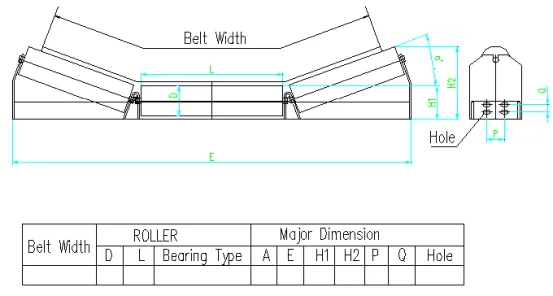 Afrikaans
Afrikaans  Albanian
Albanian  Amharic
Amharic  Arabic
Arabic  Armenian
Armenian  Azerbaijani
Azerbaijani  Basque
Basque  Belarusian
Belarusian  Bengali
Bengali  Bosnian
Bosnian  Bulgarian
Bulgarian  Catalan
Catalan  Cebuano
Cebuano  Corsican
Corsican  Croatian
Croatian  Czech
Czech  Danish
Danish  Dutch
Dutch  English
English  Esperanto
Esperanto  Estonian
Estonian  Finnish
Finnish  French
French  Frisian
Frisian  Galician
Galician  Georgian
Georgian  German
German  Greek
Greek  Gujarati
Gujarati  Haitian Creole
Haitian Creole  hausa
hausa  hawaiian
hawaiian  Hebrew
Hebrew  Hindi
Hindi  Miao
Miao  Hungarian
Hungarian  Icelandic
Icelandic  igbo
igbo  Indonesian
Indonesian  irish
irish  Italian
Italian  Japanese
Japanese  Javanese
Javanese  Kannada
Kannada  kazakh
kazakh  Khmer
Khmer  Rwandese
Rwandese  Korean
Korean  Kurdish
Kurdish  Kyrgyz
Kyrgyz  Lao
Lao  Latin
Latin  Latvian
Latvian  Lithuanian
Lithuanian  Luxembourgish
Luxembourgish  Macedonian
Macedonian  Malgashi
Malgashi  Malay
Malay  Malayalam
Malayalam  Maltese
Maltese  Maori
Maori  Marathi
Marathi  Mongolian
Mongolian  Myanmar
Myanmar  Nepali
Nepali  Norwegian
Norwegian  Norwegian
Norwegian  Occitan
Occitan  Pashto
Pashto  Persian
Persian  Polish
Polish  Portuguese
Portuguese  Punjabi
Punjabi  Romanian
Romanian  Russian
Russian  Samoan
Samoan  Scottish Gaelic
Scottish Gaelic  Serbian
Serbian  Sesotho
Sesotho  Shona
Shona  Sindhi
Sindhi  Sinhala
Sinhala  Slovak
Slovak  Slovenian
Slovenian  Somali
Somali  Spanish
Spanish  Sundanese
Sundanese  Swahili
Swahili  Swedish
Swedish  Tagalog
Tagalog  Tajik
Tajik  Tamil
Tamil  Tatar
Tatar  Telugu
Telugu  Thai
Thai  Turkish
Turkish  Turkmen
Turkmen  Ukrainian
Ukrainian  Urdu
Urdu  Uighur
Uighur  Uzbek
Uzbek  Vietnamese
Vietnamese  Welsh
Welsh  Bantu
Bantu  Yiddish
Yiddish  Yoruba
Yoruba  Zulu
Zulu Understanding Different Types of Take-Up Pulleys and Their Applications in Various Industries
Understanding the Types of Take-Up Pulleys
Take-up pulleys are essential components in various industries where conveyor systems are in operation. They play a crucial role in maintaining belt tension and alignment, ensuring the efficient functioning of the conveyor system. Understanding the different types of take-up pulleys can help in selecting the right one for specific applications, enhancing performance and longevity of the system.
1. Fixed Take-Up Pulleys
Fixed take-up pulleys are the simplest type. They are positioned at a fixed distance from the drive pulley and do not adjust automatically to changes in belt length or tension. These types of pulleys are generally used in short conveyor systems where the belt length remains constant. Although they require manual adjustments whenever there are changes in the belt, they are reliable and low-maintenance, making them a popular choice for straightforward applications.
2. Adjustable Take-Up Pulleys
Adjustable take-up pulleys allow for some degree of flexibility in terms of belt tension. These pulleys include a mechanism for adjusting their position, either through screws or other mechanical means. This adjustability facilitates easy tensioning of the belt as it wears over time or if changes in the load occur. Adjustable take-up pulleys are commonly used in medium-length conveyor systems where some variation in belt length is anticipated. They provide a good balance between maintenance and operational flexibility.
types of take up pulley

Automatic take-up pulleys represent a more advanced option. These pulleys have built-in sensors and mechanisms that automatically adjust the tension of the belt as needed. They operate under the principle of maintaining constant tension, thus preventing belt slippage and excessive wear. Automatic take-up pulleys are particularly advantageous in long conveyor systems or in applications where the load fluctuates frequently. While they may have a higher initial cost and complexity, their advantages in reducing downtime and maintenance make them a worthwhile investment.
4. Gravity Take-Up Pulleys
Gravity take-up pulleys utilize the force of gravity to maintain belt tension. In this system, a weight is suspended from the take-up pulley, allowing the weight to adjust naturally as the belt elongates. Gravity take-up mechanisms are often used in heavy-duty applications where significant belt tension is required. They are effective for continuous operation and can reduce the chances of belt slippage. However, they require a keen understanding of the load dynamics to ensure that the weight does not become excessive or insufficient.
5. Screw Take-Up Pulleys
Screw take-up pulleys utilize a threaded rod mechanism to adjust the tension of the belt. By turning the screw, operators can easily increase or decrease the position of the pulley, thereby adjusting the tension. This type provides greater control and can be adjusted without stopping the conveyor system, which is particularly useful in continuous production environments. Screw take-ups are highly effective for applications where precise tensioning is critical.
Conclusion
The choice of a take-up pulley depends significantly on the specific requirements of the conveyor system in question. Factors such as the length of the conveyor, variability in load, and the working environment all play a role in determining the most suitable type. Fixed pulleys offer simplicity and reliability for straightforward applications. In contrast, adjustable, automatic, gravity, and screw take-up pulleys provide varying levels of flexibility and control to maintain optimal belt tension. By understanding the characteristics and advantages of each type, engineers and operators can make informed decisions that enhance the performance and efficiency of their conveyor systems. Ultimately, the right take-up pulley can save time, reduce costs, and ensure that materials move smoothly through any logistics or manufacturing process.
-
Revolutionizing Conveyor Reliability with Advanced Rubber Lagging PulleysNewsJul.22,2025
-
Powering Precision and Durability with Expert Manufacturers of Conveyor ComponentsNewsJul.22,2025
-
Optimizing Conveyor Systems with Advanced Conveyor AccessoriesNewsJul.22,2025
-
Maximize Conveyor Efficiency with Quality Conveyor Idler PulleysNewsJul.22,2025
-
Future-Proof Your Conveyor System with High-Performance Polyurethane RollerNewsJul.22,2025
-
Driving Efficiency Forward with Quality Idlers and RollersNewsJul.22,2025





























